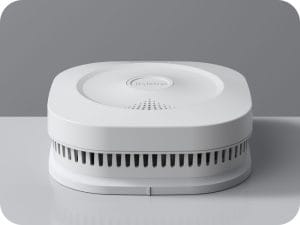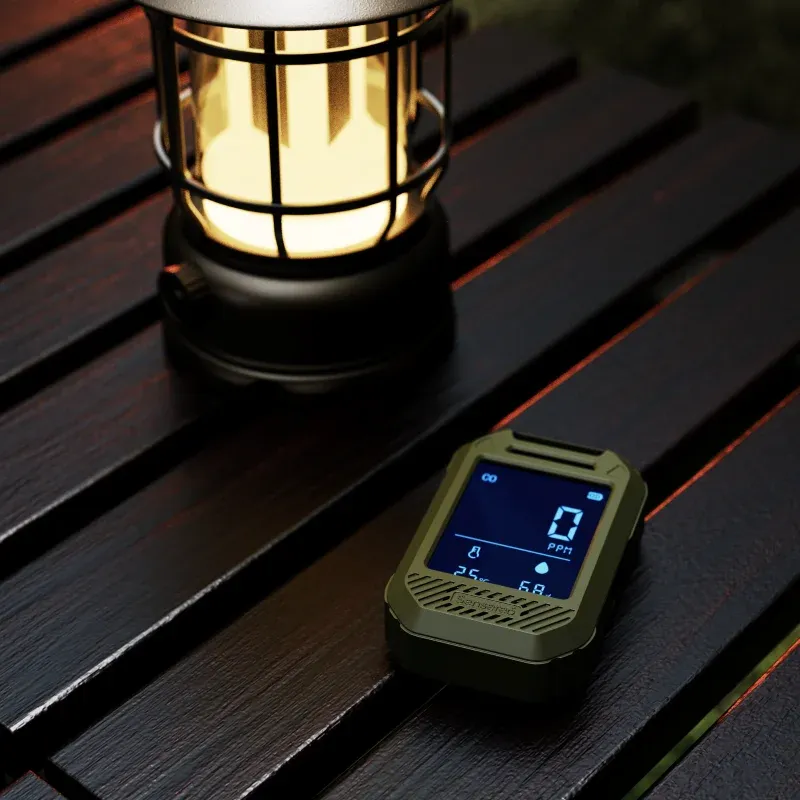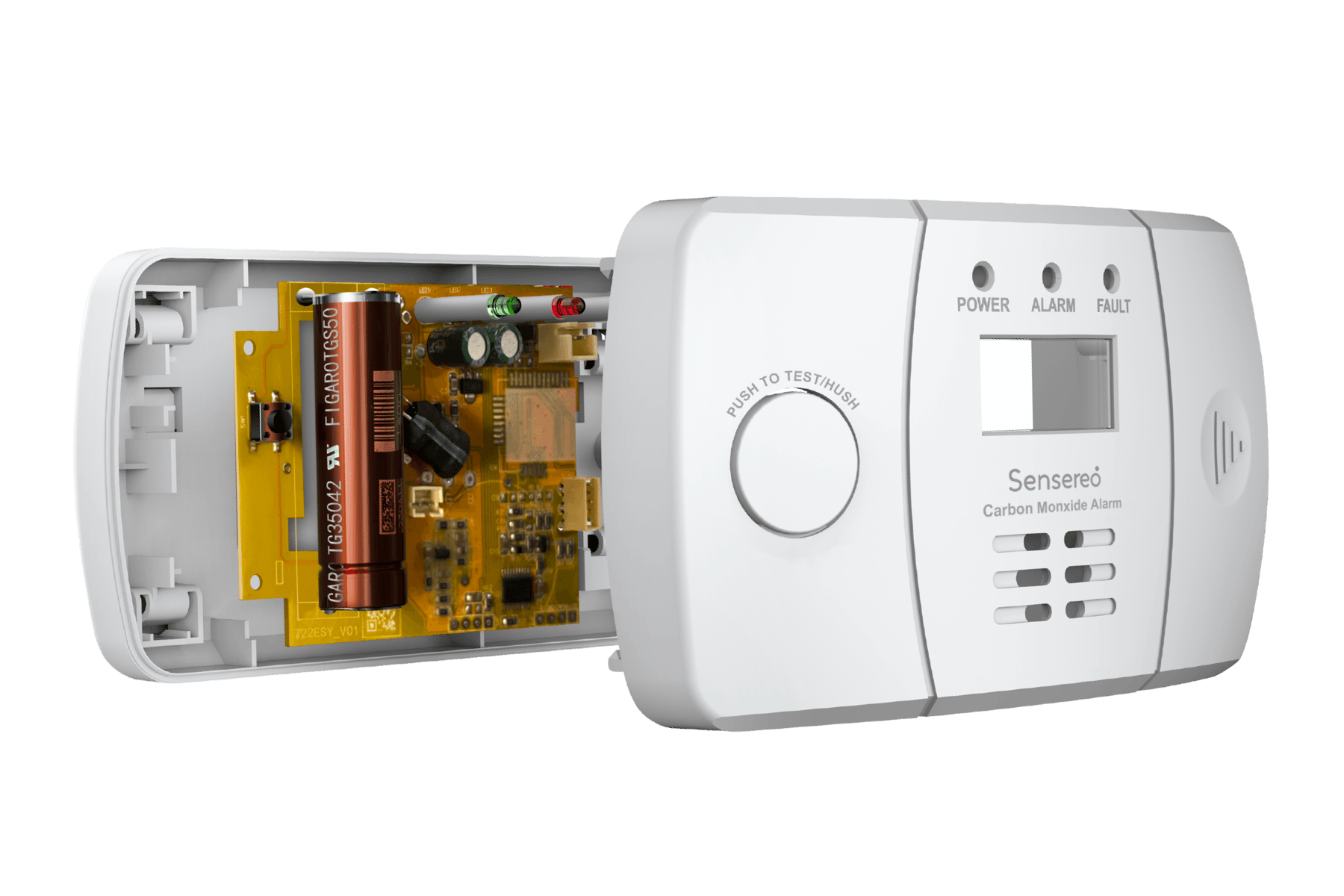
Brief Summary:
Home safety is non-negotiable, and your smoke alarm is the most critical safety device in your home. Yet, many users face a persistent challenge when installing and maintaining traditional alarms: connectivity and compatibility.
The good news is that the new generation of Matter smoke alarm systems is poised to solve these issues entirely. This article will delve into the problems caused by traditional smoke alarm connector types and explain why the Matter fire alarm is becoming the intelligent new standard for home fire safety.
The Traditional Problem: Proprietary Smoke Alarm Connector Types
Before the arrival of the Matter smoke detector, smoke alarms primarily operated in three ways, each with its own connectivity and interoperability limitations:
- Standalone Battery-Powered Alarms
These are the most common type, powered by replaceable AA batteries with a 5-year life or built-in 10-year lithium batteries. They are simple to install, but alarms cannot communicate with each other, delaying critical escape time if a fire starts out of earshot.
- Hardwired Interconnection: The Problem with Traditional Smoke Alarm Connector Types
Hardwired alarms are connected directly to your home’s 120V AC power and are linked together using a dedicated interconnect wire. When one alarm triggers, it causes all connected alarms to sound simultaneously.
The major problem here lies in the smoke alarm connector types. Hardwired alarms from different manufacturers (such as First Alert and Kidde) use proprietary power plugs and wiring harnesses. If you want to switch brands, you typically must call an electrician to replace the entire wiring harness on your ceiling, as the different brands will not link up. This compatibility barrier severely limits consumer choice, making upgrades complicated and costly.
- Wireless Radio Frequency (RF) Interconnection
These alarms communicate with each other wirelessly using radio frequencies. While this solves the wiring problem, it is usually limited to specific product lines within the same brand and cannot interact with other smart devices in your home like lights or thermostats.
Matter and Thread: The Universal Matter Smoke Alarm Solution
The introduction of the Matter protocol is fundamentally changing how smart safety devices connect. It completely bypasses the compatibility issues of physical smoke alarm connector types, enabling true “just works” functionality and cross-brand linking.
- The Matter over Thread Compatibility Revolution
A Matter smoke detector no longer relies on traditional wiring or proprietary RF signals for interconnection. It uses Thread, a low-power, highly reliable mesh networking protocol.
Eliminating Barriers: As long as your smoke alarm is Matter-certified, regardless of its brand, it can communicate with all other Matter devices in your network, including other brands of Matter smoke alarm, within a single smart ecosystem.
Cross-Platform Control: Your Matter smoke alarm can simultaneously connect to smart platforms like Apple HomeKit, Google Home, Samsung SmartThings, or Home Assistant, allowing for centralized management and remote monitoring.
- Thread’s Key Advantages for Safety
For critical safety devices like smoke alarms, network reliability is paramount.
Low Latency: Thread offers near-zero-latency response times, ensuring alarms can propagate across your entire house in milliseconds.
High Resilience: Thread is a self-healing mesh network. If one device (node) goes offline, the signal automatically routes through other devices (like smart plugs or light bulbs) in the network, maintaining connection and greatly enhancing the reliability of your system.
- Smart Automation and CE Certification
A Matter smoke detector does more than just sound an alarm. When smoke is detected, your Matter fire alarm can:
Automate Safety: Automatically turn on all smart lighting to illuminate escape routes.
Remote Alerts: Send real-time notifications to your phone, even when you are away from home.
Certification: To ensure a device is reliable, always look for certifications from reputable third-party organizations, such as CE certification. A CE-marked detector has been tested and verified to meet stringent safety, health, and environmental standards for products sold in the European Economic Area (EEA).
Upgrading Your Home Safety with a Matter Fire Alarm
If you are ready to upgrade your home safety system, consider brands focused on Matter/Thread technology, like Sensereo.
The Sensereo MS-1 Matter Thread Smoke Alarm combines high-performance photoelectric sensing technology with the stability of the Matter over Thread protocol.
Key Features:
Features a 7-year warranty.
Powered by dual batteries.
Achieves cross-platform compatibility and reliable interconnection via Matter over Thread.
Explore more Matter smart safety products on the Sensereo official website

Conclusion
The Matter smoke alarm represents the future of home fire safety. It resolves the long-standing compatibility headaches caused by proprietary smoke alarm connector types through the unifying Matter protocol and resilient Thread network. Upgrading to a Matter fire alarm system means smarter, safer, and more reliable protection for your family.
FAQ
Q1: Do all smoke alarms have the same connection?
A1: No, smoke alarms do not all have the same connection.
Hardwired alarms use different proprietary wiring harnesses and smoke alarm connector types depending on the manufacturer (e.g., Kidde vs. First Alert). You cannot typically mix brands without changing the wiring harness.
Wireless RF alarms use radio frequency to link, but these are usually proprietary and only connect with alarms from the same brand and product line. Matter over Thread is the first universal wireless connection standard designed to solve this incompatibility.
Q2: What are the different types of fire alarm cables?
A2: For residential hardwired systems, the primary connection is via your home’s standard electrical wiring (typically 120V AC) which includes a dedicated “interconnect wire” (often red or orange) for communication between units. In commercial or larger systems, specialized cables like FPLP (Fire Power Limited Plenum) or FPLR (Fire Power Limited Riser) rated cables are used to meet strict fire codes, ensuring they do not spread smoke or fire through air ducts or vertical shafts.
Q3: What are the different types of smoke alarm sensors?
A3: There are two main sensor types:
Photoelectric: More responsive to smoldering fires (e.g., a cigarette on a sofa).
Ionization: More responsive to fast-flaming fires (e.g., a grease fire).
Modern smart alarms often use Combination/Dual Sensors (including both Photoelectric and Ionization), along with dedicated Heat Sensors and Carbon Monoxide (CO) Sensors, for comprehensive detection.
Q4: Do Matter smoke alarms require battery replacement?
A4: This depends on the specific model. Some smoke alarms feature sealed lithium batteries (no replacement needed), models like the Sensereo MS-1 have a 7-year warranty and dual power design. Other smoke alarms feature replaceable batteries.



